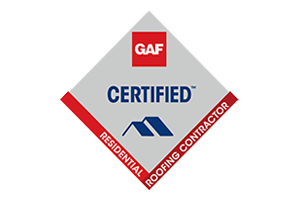Sooner or later, every home needs a new roof. That's why every homeowner needs to know the condition of their existing roof and how long they can expect it last. When selecting materials for a new roof, it's important to know the lifespan of the different options available. If you live in a place of weather extremes, you need the advice of an expert in order to get the most out of your roof. Here's Roofing 101 for homeowners:
When To Replace A Roof
The greatest gift a homeowner can give their home is a regular roof inspection every year. In fact, it can't hurt to schedule two inspections annually if you live in an area of climate extremes. For example, families who live in a place like Florida need an inspection before hurricane season in order to prepare for the possibility of weathering conditions of high wind and heavy downpours. Once hurricane season is over, another inspection is in order to see if any damage was incurred.
Regular inspections will alert a homeowner early to damage, enabling rapid response with repairs. This can prevent a small problem from becoming a larger one that might significantly shorten the lifespan of a roof and cause costly structural damage. A professional roofer will advise when it is time to replace a roofing system. By having regular inspections, a homeowner is not caught unaware and unprepared for this situation. An inspection report may indicate that current roofing conditions are satisfactory but leading toward roof replacement in the coming months. Inspections empower homeowners with lead time to get finances in order and do their homework on the type of roof they would like to have in the future.
7 Signs A New Roof Is Needed
There are many red flags signalling roof replacement is needed before a house springs a major leak. Pay attention to these 7 warning signs:
- Age: A typical roofing system has a lifespan of 20-25 years. Certain factors can affect this, like how many layers of shingles are in place or living in an area of severe weather.
- Curls & Buckles: Stand back and take a good look at your roof. If you notice shingles that are curled or buckled, you probably need a new roof. To do their job properly as a barrier, shingles need to be laying flush and flat against the underlying membrane.
- Faded Valleys: Rain and snow will wear shingles in roof valleys earlier than the shingles installed on flat planes. Erosion of shingle granules occurs faster as rainfall and snow are funneled through valleys into the home's gutter system. If you observe a striking color variation between valley shingles and the rest of the roof, it's probably time for a new roof.
- Bare Spots: Bare spots that indicate missing shingles are a sure sign it's time to replace the roof.
- Flashings: Flashings require water-tight seals around their fittings. If these substances have aged past the point of proper performance, it's likely the rest of a home's roofing materials have as well.
- Gutter Granules: Examine water runoff from gutter spouts. If it is gritty with shingle granules, your roof's topmost protective barrier has aged past its prime and is slowly washing away. Time for a new roof.
- Daylight In The Attic: Take a trip up to the attic and turn off the lights. If daylight is peeking through tiny cracks and crevices, that means water can intrude. It may already have intruded and a spongy, damp mess could be lurking in attic insulation.
The Life Of A Roof
There are a variety of options when it comes to selecting roofing materials. Each have their own life expectancy guidelines:
- Composition Shingles: On average about 20 years. Extreme weather conditions could shorten it to 15.
- Wood (Shake) Shingles: A cedar roof can last about 30 years. Proximity to saltwater can significantly shorten this lifespan.
- Metal: Aluminum, copper and steel are popular metals for roofing. On average, a metal roof's lifespan is about 50 years. A metal roof could last longer or need replacement sooner, depending on the particular metal selected and climate conditions.
- Concrete Tiles: Average life expectancy of about 50 years.
- Clay Tiles: Average life expectancy of about 100 years.
- Slate Tiles: Being less porous than clay tiles, a slate roof can last even longer, about 150 years.
Ask A Professional Roofing Company
With so many choices, it can be difficult for a homeowner to know what is right for their home. After all, it may seem wise to invest in concrete, clay or slate. But these materials are much heavier than composite shingles. A consultation with a roofing expert can determine if an existing roof can handle the weight of a transition from shingles to something like slate. To schedule a roof inspection, or get a free estimate on a new roof, please contact us. Our roofing experts can help you select the perfect roofing option to fit your needs.





